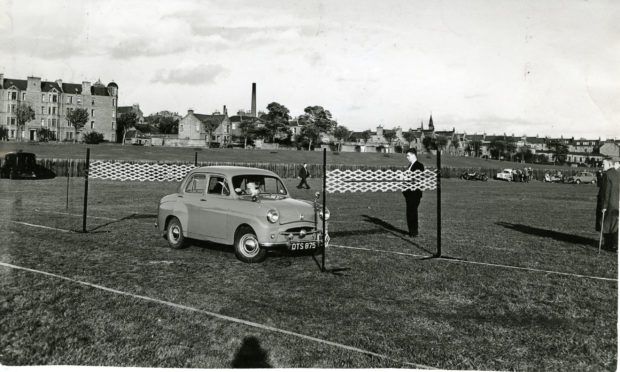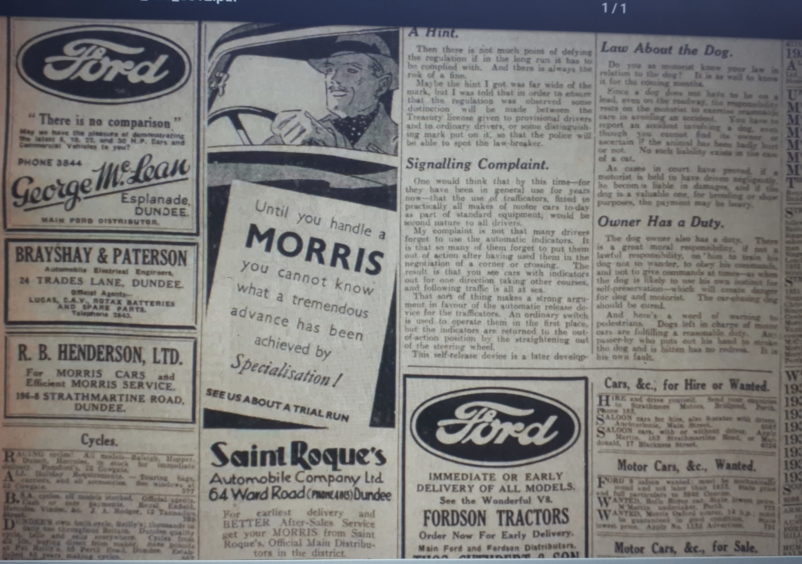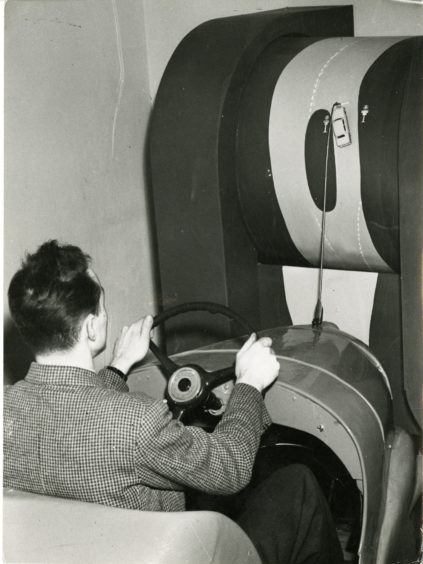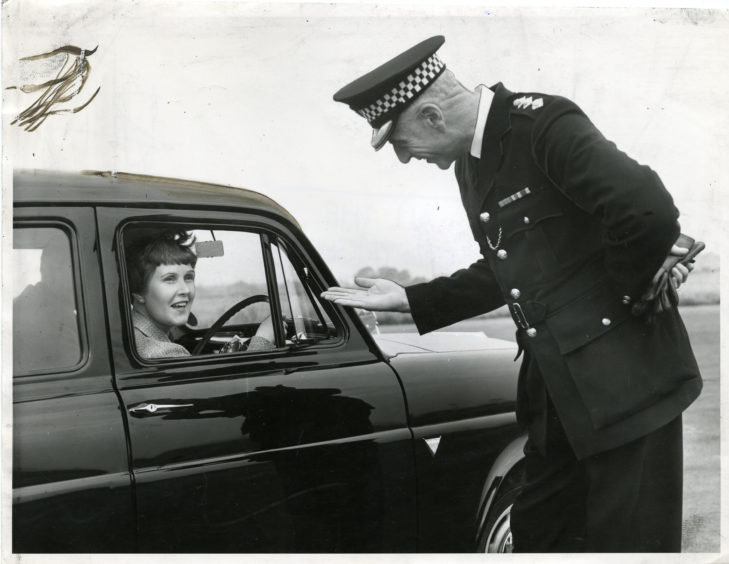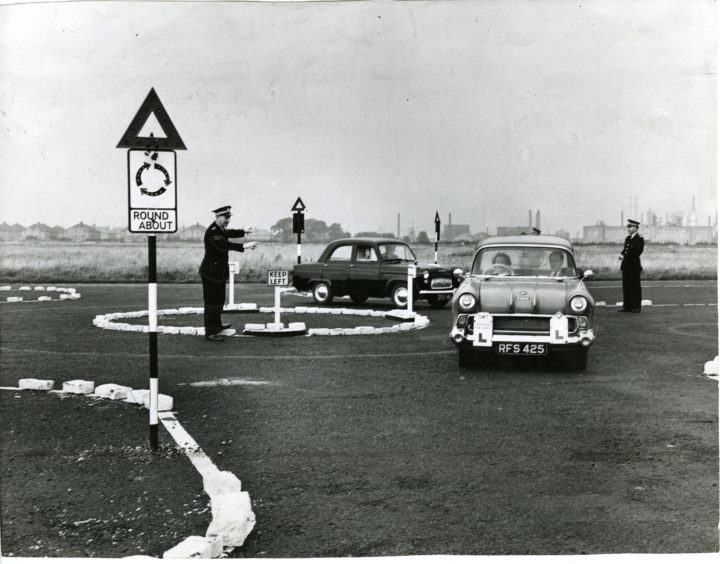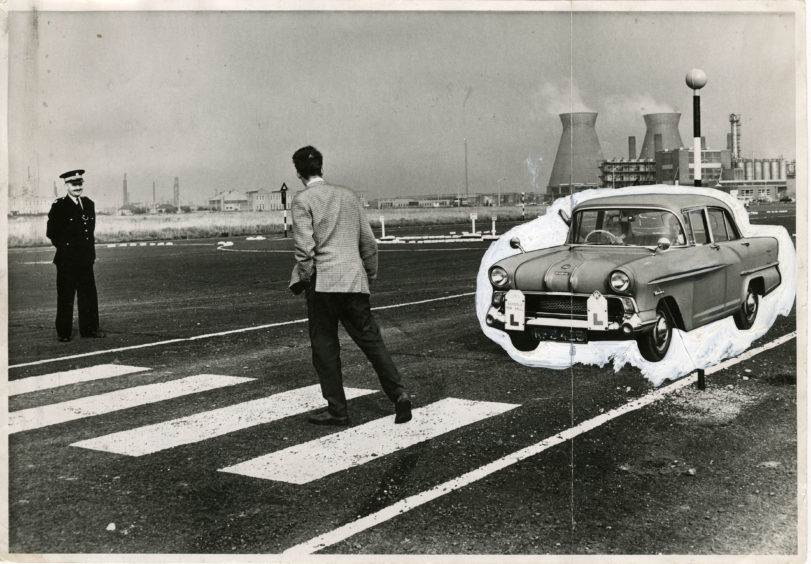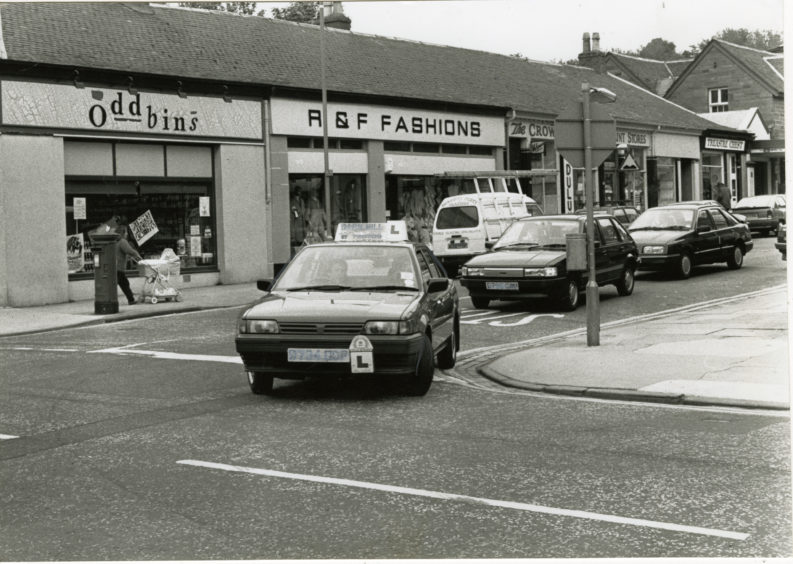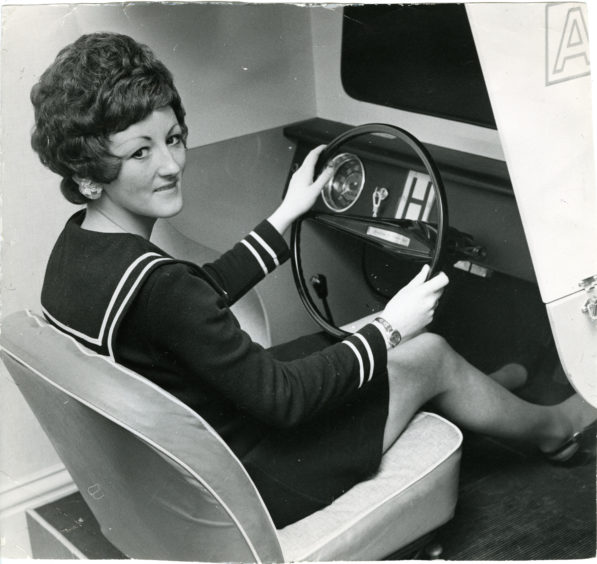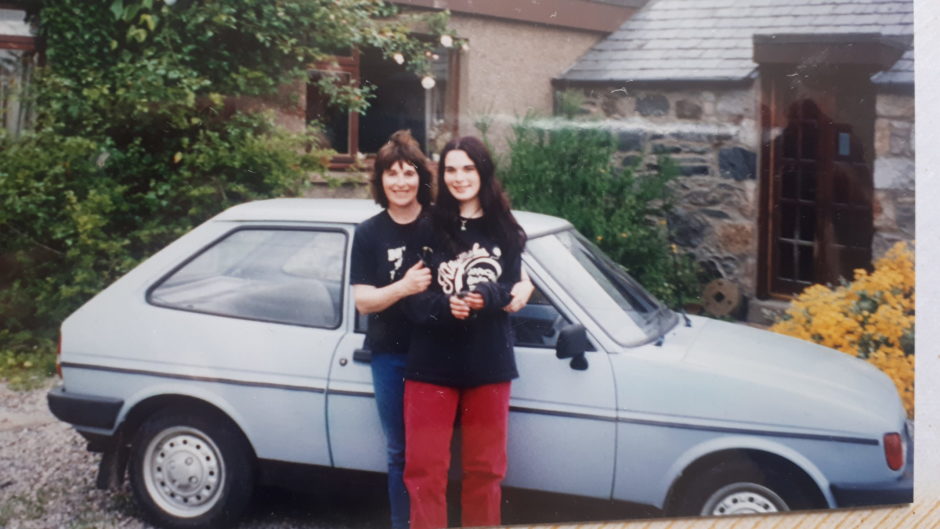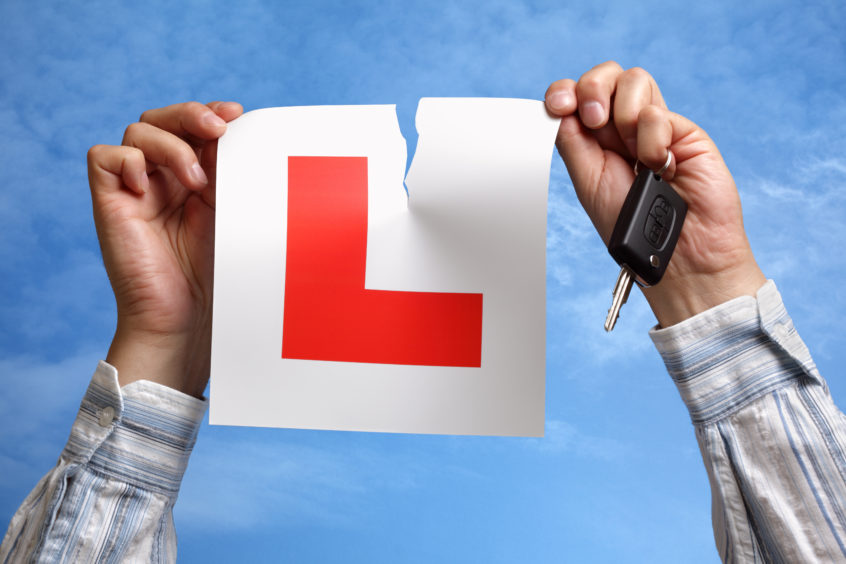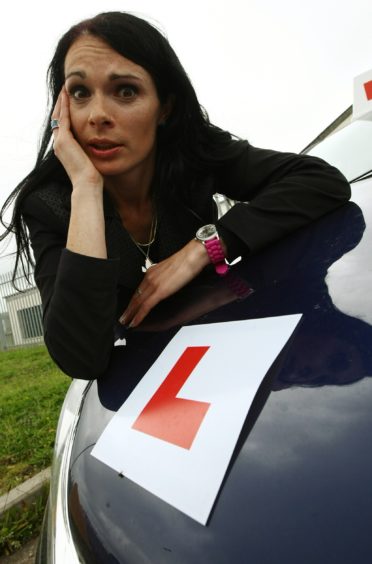The UK’s driving test has been bringing learner motorists to tears and testing their mettle for 85 years.
The test became compulsory on June 1 1935 and the first person to take it was a Mr R. Beere of Kensington.
He paid the princely sum of seven shillings and sixpence (the equivalent of 37.5p) to take the test and passed with flying colours.
It must have been fairly nerve-wracking to be the first-ever person to sit the exam.
But when you consider that many people had been driving around since 1903 – when the first licences were issued – it might not have fazed them too much.
Earlier that year, in March 1935, a voluntary driving test had been introduced for UK drivers by the DVSA (Driver and Vehicle Standards Agency). This was to avoid a rush of candidates when the test became compulsory.
By June, it was required by law that anyone who had started driving on or after April 1 1934 must sit a test.
When the test was introduced, there were 2.4 million cars, but 7,343 people were killed on Britain’s roads.
By comparison, in 2018 (the latest statistics) there were 33 million cars in the UK, but 1,784 people were killed on the roads.
There were no driving test centres in 1935 so candidates had to arrange to meet examiners somewhere like a post office, train station or town hall.
Since 1935, more than 52 million tests have been taken.
DVSA chief driving examiner Mark Winn said the agency’s priority is to help everyone through a lifetime of safe driving.
“The driver testing and training regime tests candidates’ ability to drive safely and responsibly as well as making sure they know the theory behind safe driving,” he said.
“It’s vital that learners are prepared to drive safely on all types of road before taking their test, and we encourage learners to spend time practising on a variety of roads and in different driving conditions.”
Your Driving Test – 1935
Ahead of the test coming into force in 1935, Ford released a seven-minute film to prepare drivers for what lay ahead.
Entitled Your Driving Test – 1935, you can watch it on YouTube, or just below.
Commentary was offered by Sir Malcolm Campbell, a British racing driver and motoring journalist, who advised learners not to be nervous and reassured them that the test had one object – “to make our roads safe”.
With no indicators on vehicles, the film showed how you should signal your intent with your right arm held out of the window.
Drivers were also warned: “Don’t flick your cigarette ash outside. It’s very misleading.”
Sir Malcolm also showed an example of bad driving, with a car performing a risky overtake manoeuvre.
“Look at this driver. He is determined to pass this vehicle in front no matter what is approaching,” he scolded.
“It’s pure selfishness and it’s dangerous…never drive like this chap…it’s a dangerous nuisance to other drivers and puts a big black blot on the driver’s copybook.”
We also see a terrible case of tailgating, and a “criminal” example of a driver “coming from the side without stopping”.
The film also informs viewers that taking a right-hand bend on the wrong side of the road is “asking for trouble” and “the examiner doesn’t like it”.
There’s also a hill start, some parking, an emergency stop and restart, and some bad reversing, with the driver knocking down a fence post.
“Don’t flick your cigarette ash outside. It’s very misleading.”
One final tip was not to look down at your gear lever when changing because “examiners don’t like cars on pavements”.
Sir Malcolm finished the film with this reassurance: “Study your Highway Code, think what you’re doing, drive with care and consideration, and remember what you have seen in this film, then we shall have the pleasure of greeting you as a member of the fellowship of the road.”
“Their own little pigeon”
On April 8 1936, The Courier reported that demand for the driving test was “so great” that it had led to a delay of three weeks.
The newspaper’s motoring correspondent also cast his views on the “great many learners” who were disregarding regulations stating they must sport easily-read L-plates on the front and rear of vehicles.
“If they want to take the risk of being found out, that is their own little pigeon, and it means a fine if prosecution takes place,” the correspondent added.
Car costs
It’s no surprise that the price of lessons and sitting the driving test have rocketed.
These days, the practical test will set you back £62 while the theory test is £23.50.
The price of lessons varies but if you get them with Stuart Walker, of Stuart Walker’s Dundee Driving School, a lesson will cost £27.
“It used to be that folk only needed around 20 lessons,” said Stuart.
“But these days, learners are taking around 45.”
That’s quite a lot of cash – £1,215 for lessons, to be precise. Add on the cost of the practical and theory tests and your grand total is £1,300.50!
The Dundee driving instructor
Stuart has been giving driving lessons in and around Dundee for almost 36 years.
The 60-year-old was just 24 when he took on the profession.
“I’ve always loved driving,” he said. “I became an instructor in 1985 and I’ve seen a lot of changes in tests in that time.
“The test, which was conducted from Broughty Ferry Test Centre, used to be just 15 to 20 minutes long.
“Drivers reached a maximum speed of 40mph because they didn’t go onto the dual carriageway.
“Then it became harder, with the test being up to 40 minutes and drivers reaching 70mph on the dual carriageway.”
It beggars belief to think that millions of people drove around without ever having sat tests.
And it wasn’t that long ago that many people drank and drove without a care in the world.
“My grandfather never sat a test,” said Stuart. “And no doubt many others never sat a test! You were simply given a licence.
“It’s a pretty scary thought.”
The role of instructor is a hugely responsible one and Stuart is always “three or four moves ahead” of a learner driver.
“You need to be able to see a dangerous situation before it gets ugly,” he added.
Thankfully, Stuart hasn’t been in an accident with any of his learner drivers at the wheel, although a few of them have been shunted from behind.
“That’s not the learner’s fault!” he said. “I’ve had a few near-misses with deer and hit a couple of birds, but other than that, there’s been no drama.”
Driving test facts and figures
Driving licences were first introduced in the UK by the Motor Car Act, 1903, purely as a means of identifying vehicles and drivers.
All motor vehicles had to be registered, display registration marks and be licensed annually at a cost of 20 shillings (£1).
The fee for the first driving licence, obtained at Post Offices, was five shillings (25p).
Failure to sign your driving licence with your “ordinary signature” could lead to a fine of up to £5.
In 1921 there were only one million drivers in Britain.
By 1935, there were 2.4 million cars on the roads and the number of deaths was worryingly high, at 7,343.
The DVSA therefore brought in compulsory testing on June 1 1935 for all drivers and motorcyclists who had started driving on or after April 1 1934.
Four years later, in 1939, the number of drivers in the UK had increased to three million.
Driving tests were suspended on September 2 1939 for the duration of the Second World War.
During the war, examiners were redeployed to domestic traffic duties and the supervision of fuel rationing.
Tests resumed on November 1 1946.
It was only during the 1960s, when cars became more affordable, that motoring really took off.
New drink-drive laws came into force on October 8 1967. The legal limit was 80mg alcohol in 100ml blood.
In 1973 the number of drivers had risen to about 20 million and a centralised computer-based licensing system was brought in to cope with the huge increase in demand for both driver and vehicle licences.
In 1975, candidates no longer had to demonstrate hand signals.
The theory test was introduced in 1996, replacing questions about The Highway Code during the practical test.
The hazard perception segment of the theory test, which consisted of 14 video clips, was introduced in November 2002 and assessed the driver’s ability to spot developing hazards.
From 2018, the clips included scenarios of driving in different weather and light conditions.
Highway Code
The first edition of The Highway Code was published on April 14 1931.
Mirrors were not even mentioned in it and drivers were advised to sound their horn when overtaking.
These days, advice on how to cross the road fills an entire chapter, but in the early days it only merited a paragraph.
More than a third of the original 24-page booklet described the various hand signals the police and road users should use, compared to the single page given to the subject in the current edition.
Gayle’s epic pass – and fail
I passed my driving test (whisper it) more than two decades ago.
Living in the middle of the Aberdeenshire countryside, I’d been utterly desperate to gain the freedom afforded by driving my own car, thus saving my weary parents from having to ferry me around.
I had my first driving lesson during a school lunch break on my 17th birthday. That evening, my dad bravely took on the role of instructor while I shuttled him down to the nearest village in my pale blue 1984 Ford Fiesta to practice some manoeuvres.
A few grey hairs later, we returned home.
As the weeks went by, my driving improved and a date was set for my test – two days before Christmas.
I was extremely nervous as I was dropped of at the Bridge of Don test centre.
The test, so far as I can remember, went well until I stalled the car at a roundabout.
If I were to stall today, in 2020, I wouldn’t bother doing what you’re supposed to do – put the car into neutral, apply the handbrake, switch off the engine, and then get going – but I followed that procedure on the day of my test, and that’s why I wasn’t punished too harshly.
In fact, I passed the test with a mere two minor faults. I was very proud indeed.
My pride, however, was smashed to smithereens when I took a mock test in Dundee in 2014 and failed.
I did this because The Courier was running a report that stated most experienced drivers (probably meaning those who had sat the test years ago) would struggle to pass.
The challenge to find a driving instructor to put me through a mock test was on. And just remember – I had no warning or chance to Google any hints or tips.
Armed with the knowledge that 38 out of 50 drivers had failed the Direct Line test, instructor Ken Melville of The Passing Place in Dundee was keen to help.
Over 40 minutes, we drove round Dundee and carried out several manoeuvres, including reverse parking, an emergency stop and negotiating narrow roads.
Then there was a point at which I turned right off a roundabout onto the Kingsway, heading towards the city centre which involved a right turn. Because Ken told me the plan in advance, I stayed in the right lane in what I believed to be a display of forward-thinking.
At another point during the test, I got into a tricky situation with a bus coming towards me. We were both heading for the same narrow gap and as we squeezed through, Ken visibly flinched.
Back at base, Ken revealed I had failed – without a hint of emotion.
This is what he said: “You failed largely on technicalities. Ideally, you’d have a six-point check before moving off; you need to check three mirrors and three windows, which includes looking over your shoulder.
“You also coasted with the clutch several times. When it came to the emergency stop, you stopped safely but failed to put the hand brake on and check your blind spots after stopping.”
My approach to junctions was sometimes a little too fast and when it came to meeting the bus, positioning wasn’t good, Ken told me.
It wasn’t all bad. “You used your mirrors very well before signalling and changing direction,” he said.
“Your use of speed was fine, although you did creep up to 33mph. You weren’t hesitant and you didn’t inconvenience anyone else.”
Ken gave me three faults for positioning; while I was driving in the right lane of the Kingsway, he believed I could have caused “frustration”.
I absolutely disagreed. He told me we were heading for the city centre (and I knew this involved turning right), plus there was nobody behind me to frustrate. I’m definitely not one of those annoying lane hoggers!
“Your use of speed was fine, although you did creep up to 33mph.”
In total, I clocked up 13 minor faults and a staggering seven major faults (oh the shame) but despite this, Ken informed me my overall driving was fine.
“You’re a good driver and exactly what I’d expect of someone who’s been driving for 18 years,” he said.
Ken reckons drivers should be tested every 10 years so they can brush up their skills.
Had I had time to prepare, or maybe even had a refresher lesson, I reckon I could’ve done much better, But I would say that, wouldn’t I?
Big fails
There are countless factors that lead to learner drivers racking up driving test faults and, ultimately, failing their test. This could include speeding, bad road positioning or ignoring pedestrian crossings.
But, according to the DVSA, the number one reason for learners failing their test is making inadequate observations at junctions.
Other common reasons for failing include: indicating too early or too late, causing confusion to other drivers; turning into a road without checking your mirrors first; losing control of the steering wheel when turning into a road; and turning into a new road too quickly.
Suspended
Driving tests were suspended for up to three months from March 20 due to the coronavirus lockdown. However, you can apply for an emergency test if you’re a critical worker.
